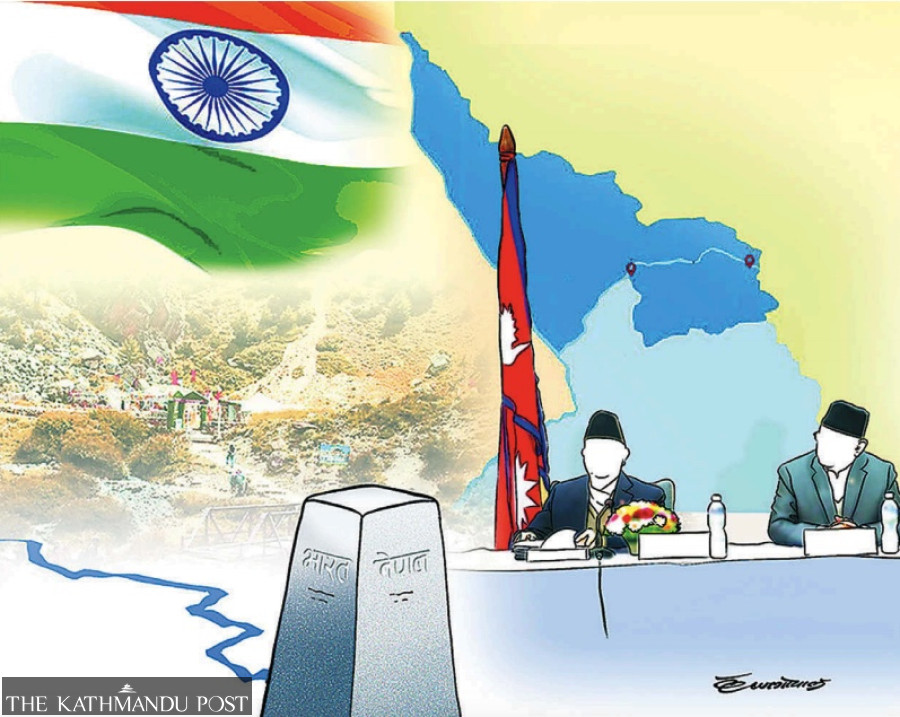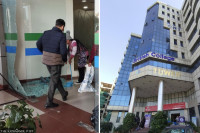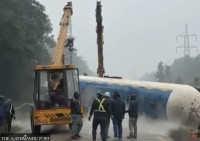National
Nepal asks India to sit for boundary meeting
In the fifth meeting, Nepal and India had aimed to finish remaining border works by 2022, but there’s been no progress.
Post Report
Nepal has urged India to convene a meeting of the Boundary Working Group (BWG), a joint body constituted by the governments of Nepal and India in 2014. The group aims to carry out work in the fields of construction, restoration and repair of boundary pillars including the clearance of the no-man’s land and other technical tasks.
Formed during the first visit of Indian Prime Minister Narendra Modi to Kathmandu, the group held its last meeting in August 2019 in India. Nepal has since made several correspondences with India to resume the meeting of the BWG, but no concurrence has been received from the Indian side yet, said a senior official at the Ministry of Land Management, Cooperatives and Poverty Alleviation.
Replying to the question of Dilendra Prasad Badu, a Nepali Congress lawmaker from Darchula district, the Ministry of Foreign Affairs responded to Parliament that the last meeting of the BWG was held in Dehradun, India and the Nepali side has proposed a date with India to hold the next meeting. The Parliament Secretariat has put the details of all the answers given by various ministries on its website.
Badu had inquired about any progress made with regard to resolving the boundary issue in Kalapani, Lipulek and Limpiyadhura and demanded a reply from the Ministry of Foreign Affairs.
After India came up with the new political map on November 2, 2019, the foreign ministry’s attention was drawn. It subsequently made it clear that Kalapani, Lipulek and Limpiyadhura are parts of Nepal. Those outstanding issues should be resolved through mutual consensus and any unilateral action would be unacceptable to Nepal, according to a statement issued on November 6, 2019.
And the ministry also sent several correspondences in the past, according to the response furnished by the ministry. A diplomatic note was sent to India on November 20, 2019, stating that as per Article 5 of the Treaty of Sugauli, the eastern part of Kali (Mahakali) River, including Kalapani, Lipulek and Limpiyadhura, belongs to Nepal. The Indian map published on November 2, 2019 went against the Sugauli Treaty. The diplomatic note sent on November 20, 2019 also urged the government of India to correct the map it had published earlier in the same month.
As per the Cabinet decision of May 18, 2020, the Ministry of Land Management, Cooperatives and Poverty Alleviation issued a new map of Nepal (administrative and political) on May 20, 2020 by incorporating Kalapani, Lipulek and Lipiyadhura, said the foreign ministry in its response.
The Nepal-India boundary inspection and monitoring committee is doing its work.
The government of KP Sharma Oli had formed two committees in August, 2020 to inspect and monitor Nepal’s southern and northern borders led by the heads of India and China desks, respectively.
The boundary inspection of the southern (India) border was completed while the inspection of the Nepal-China boundary has not commenced yet. The ministry gave no reason why boundary inspection was not carried out on the northern (China) border.
The sixth meeting of the Nepal-India joint commission at the foreign ministers’ level that concluded in India January 15, 2021 also discussed completing the work in the remaining segments of the Nepal-India border, said the ministry.
During the visit of Prime Minister Sher Bahadur Deuba to India on April 1–3, 2022, a request was made to resolve the boundary issue, said the ministry. Deuba paid an official visit to India and asked his Indian counterpart, Narendra Modi, to resolve the outstanding boundary issues, but there has been no concrete progress.
During the recent visit of Prime Minister Pushpa Kamal Dahal from May 31 to June 3, the request was renewed with the Indian side to resolve boundary matters through the bilateral mechanisms, the ministry said.
“We will keep working to take our relationship to the height of the Himalayas and in this spirit, we will solve all issues, be they boundary-related or any other,” Modi said at the joint press meet in New Delhi on June 1 following delegation-level talks between him and Prime Minister Dahal.
“Prime Minister Modiji and I discussed the boundary matter and I urged Prime Minister Modiji to resolve the boundary matter through the established bilateral diplomatic mechanism,” said Dahal during the press meet at the Hyderabad House. There is constant push from the Nepali side to resolve the boundary matters with India, said the ministry, stating that it had already offered a date for the meeting of the BWG.
During the fifth meeting of the BWG in Kathmandu, Nepal and India had set a 2022 target to complete the remaining works on the border. The lack of progress was blamed on the Covid pandemic. The BWG was mandated to complete the boundary works besides Susta and Kalapani including installation of the boundary pillars, and repair and maintenance of the pillars damaged or destroyed.
But it seems India is interested in working through the mechanism constituted at the chief district officer and district magistrate level, a senior official at the Ministry of Land Management, said. They are “bypassing” the BWG formed at the level of the director general of the Department of Survey and the Surveyor General of India.
The Department of Survey data shows Nepal and India have installed 8,554 pillars along the border. Of these, 1,325 are missing and 1,956 are damaged or in a partially-damaged state. Below the BWG, there are two mechanisms—Survey Officials’ Committee and Joint Field Survey Teams—to go on the field and provide technical inputs to the BWG. The meetings of these mechanisms have also stalled since 2019, said the officials.




 7.12°C Kathmandu
7.12°C Kathmandu












%20(1).jpg&w=300&height=200)

